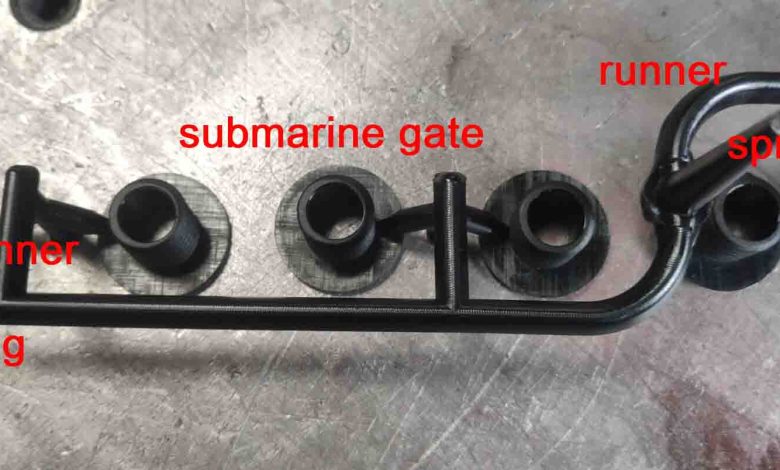Unlocking the World of Plastic Mold: A Guide to Mold Types, Manufacturing, and Applications in China

Plastic mold is a highly engineered tool that enables the mass production of plastic products that we use every day. This guide will unlock the technical world of plastic molds by throwing light on the different types of molds, manufacturing processes, and major applications across sectors, with a special focus on China’s capabilities.
Demystifying Plastic Mold
A plastic mold is a crafted metal tool consisting of a cavity and core that gives shape to molten plastic injected into it to create finished plastic parts in large volumes. Molds are made from materials like aluminum and steel alloys and machined with precision techniques.
The main components of a mold are:
- Mold cavity – Negative of the part shape
- Core – Provides exterior detailing
- Runners – Channels for plastic flow
- Clamping system – To apply pressure
- Ejection system – To eject finished parts
Molds are capable of producing intricate plastic parts cost-effectively and with incredible consistency. They are indispensable for mass production in every industry imaginable today.
Classifying the Diverse World of Plastic Mold
Plastic molds can be classified in different ways:
Mold Structure
- Two-plate mold – Simplest with two main plates
- Three-plate mold – Additional ejector plate
- Hot runner mold – Heated nozzle for lower waste
Molding Method
- Injection mold – For thermoplastic injection molding
- Compression mold – For thermoset compression molding
- Blow mold – For hollow plastic parts
- Thermoform mold – For plastic sheet vacuum forming
Number of Impressions
- Single impression mold – One part per cycle
- Multi-impression mold – Multiple cavities for higher productivity
Mold Material
- Steel molds – For high-volume production above 10,000 units
- Aluminum molds – For shorter runs, prototypes due to lower cost
There are also specialized molds like stack molds, micro-molds, insert molds, and more for specific applications.
The Complex Mold Manufacturing Process
Creating precision plastic molds involves several steps:
- Design and Simulation
- Intricately designing molds in CAD, including details such as cooling channels.
- Utilizing mold flow analysis for simulation purposes.
- Machining and Fabrication
- Employing CNC milling, turning, EDM, and other techniques to craft core and cavity components from metals.
- Optionally acquiring standard parts as needed.
- Assembly and Alignment
- Methodically assembling components and ensuring precise alignment to create the complete mold tool.
- Testing and Trials
- Conducting test runs to optimize process parameters and make necessary adjustments prior to final production.
- Finishing
- Performing finishing tasks which may include polishing, texturing, or coating the mold.
- Employing heat treatment processes to enhance hardness if required.
- Maintenance
- Implementing proper maintenance procedures between runs and throughout hundreds of thousands of cycles.
Each of these steps demands a high level of expertise, and the investment in well-crafted, precision molds yields significant returns over the long term
Major Applications of Plastic Mold in China
China is the epicenter of plastic mold manufacturing catering to diverse industries:
Automobiles
Interior and exterior plastic components like dashboards, bumpers, and housings are replacing metal with plastic reducing weight.
Consumer Electronics
Molding enables complex one-piece housings, frames, and components for smartphones, laptops, TVs, and other electronics.
Medical Manufacturing
Plastic molds help mass produce disposable medical devices like syringes, well plates, test kits, vials, etc. with high precision.
Packaging
Food, pharmaceutical, cosmetic, and other product packaging like bottles and containers are blow molded in huge volumes in China.
Toys and Games
Injection molds keep costs low for mass production of building blocks, action figures, and playsets exported globally.
China will continue to dominate mold-making and plastic production as it transitions to higher technology manufacturing.
The Importance of Plastic Mold
Some key benefits of plastic molds:
- Cost-effectiveness – mass production at low unit costs
- Consistency – Highly consistent and identical components through automation
- Complexity – Intricate shapes, and internal features are possible
- Efficiency – Very high production rates and low cycle times
- Flexibility – Wide range of plastic materials
- Durability – Molded plastic parts have high strength suitable for mechanical applications
These factors make molds indispensable for every industry. China’s capability and capacity for precision mold making is global.
Conclusion
This guide has unlocked the world of plastic molds like paint bucket mold and chair mold by throwing light on the diverse mold types, intricate manufacturing processes, major applications across sectors, and China’s capabilities. Plastic molds enable mass production and complex designs while reducing costs. With its sophisticated mold engineering and production infrastructure, China is sure to continue dominating global plastic mold-making and plastic manufacturing.



